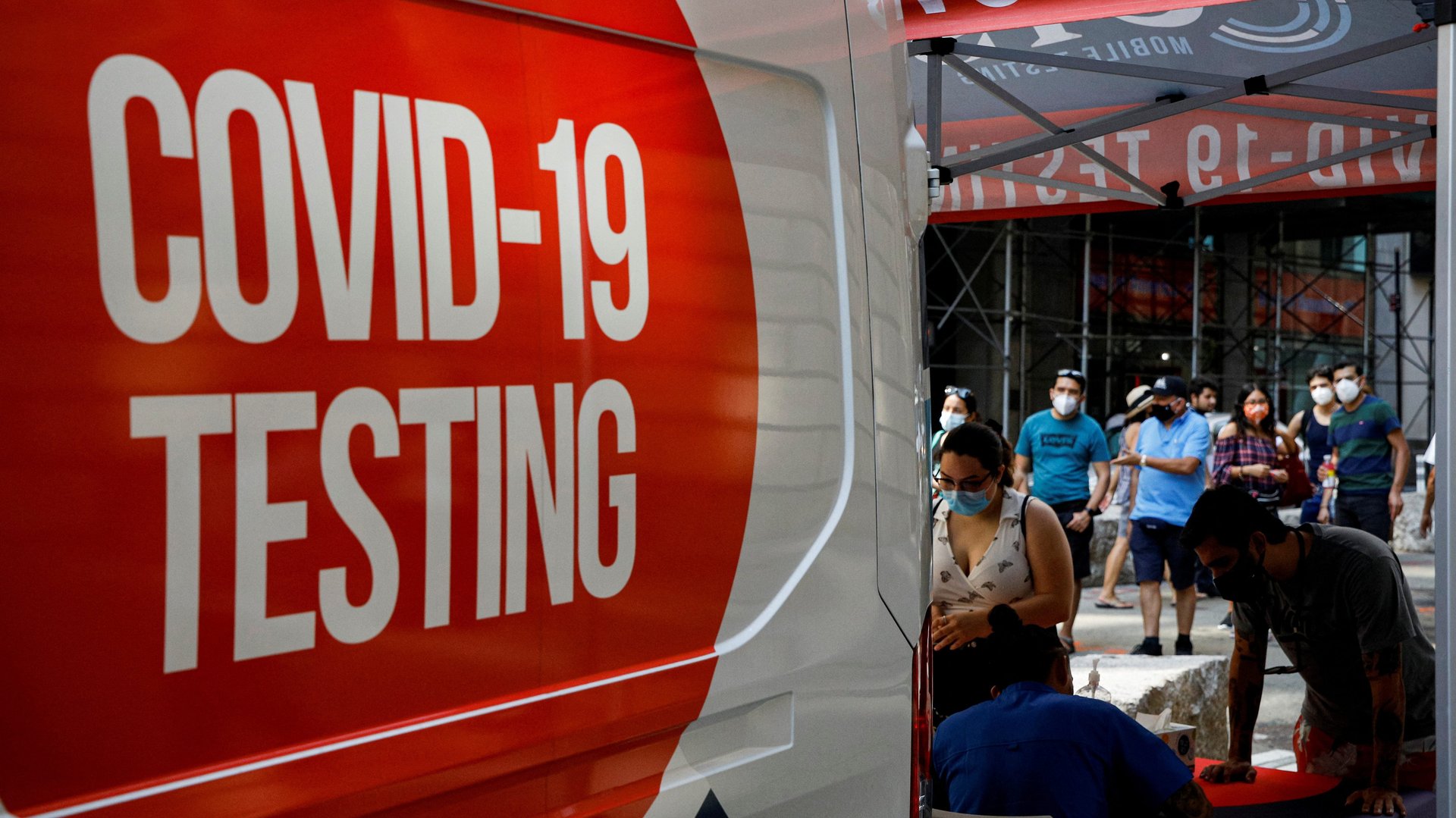The White House’s BA.5 variant plan is to do everything that didn’t work before
Covid’s omicron subvariant BA.5 has taken over the US. It now accounts for 65% of all covid cases in the country, and appears to be very contagious and more likely to cause breakthrough infections. All indicators—number of cases, hospitalization, and deaths—are trending up, and while catastrophic predictions might not be justified, it’s reasonable to expect many millions of new cases in the coming months.


Covid’s omicron subvariant BA.5 has taken over the US. It now accounts for 65% of all covid cases in the country, and appears to be very contagious and more likely to cause breakthrough infections. All indicators—number of cases, hospitalization, and deaths—are trending up, and while catastrophic predictions might not be justified, it’s reasonable to expect many millions of new cases in the coming months.
More than 5,500 people are being hospitalized daily, and the spread is generating concern especially as immunity wanes. For many of the 34% of Americans who got boosters, their latest shot was administered more than six months ago. In May, the Centers for Disease Control and Prevention recommended people over 50 and those who are severely immunocompromised get a second booster, but the shots offered aren’t targeted specifically for the dominant subvariant, which is different enough from the main covid strain to make vaccines less effective.
The White House, which has been monitoring the BA.5 variant for months, has shared a roadmap to tackle yet another covid wave. It involves all the steps that didn’t really work to control previous waves.
The White House preparedness isn’t enough
“My team and I have been monitoring the BA.5 variant of COVID-19 for months,” tweeted Joe Biden yesterday. “We’re prepared, and we know how to manage this moment with the vaccines, treatments, and other tools we have made widely available.”
Among the measures listed are: granting access to vaccines and treatment, providing high-quality masks and at-home tests, encouraging building owners to improve ventilation, giving clear masking recommendations.
Yet none of these steps is different from what the White House has been doing since the beginning of the year, and none of it has helped contain the spread. Despite assurances that the government had a plan, the infection reached a peak of more than 850,000 daily cases, and more than 3,500 daily deaths, in January 2022.
The government’s covid.gov’s website features little new information. The recommendations remain unchanged from the past months—essentially, get a vaccine and protect yourself. But while these are important measures to avoid severe cases and deaths, they don’t do much to contain the spread. For instance, incentives for buildings to provide better ventilations aren’t strong, and the guidelines for businesses aren’t clear either, leaving many business owners guessing on how to keep their customers, and employees, safe.
The White House focus continues to be on individual responsibility, rather than on public health measures to avoid infection, which inevitably puts the most vulnerable at higher risk. In some cases, the government has its hands tied—while the Department of Justice has appealed the mask mandate strike down, it doesn’t yet have the authority to impose masking requirements. But more could be done to drive home the urgency of the moment, the necessity of masking, avoiding crowded places and—yes—perhaps avoiding time indoors with other people.
Otherwise, conservative estimates say the current wave could lead to 10% to 15% of the population infected with BA.5, and while mortality might not be very high, the new wave could still realistically kill more than 10,000 people, as well as cause widespread illness and lead to many cases of long covid.